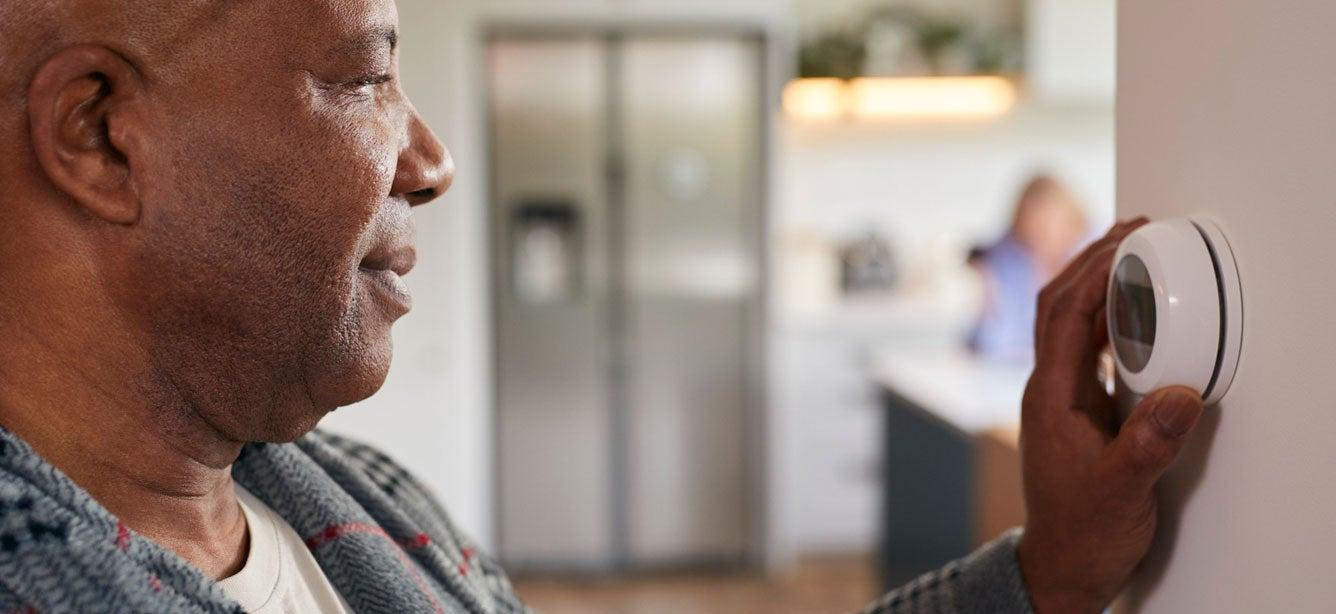Pioneering Culturally Responsive Benefits Outreach in New Mexico
3 min read

For the first time, the National Council on Aging will be represented at this year’s National Congress of American Indians (NCAI) Annual Convention & Marketplace. The NCAI, founded in 1944, is the oldest, largest, and most representative American Indian and Alaska Native organization serving the interests of tribal governments and communities.
Each year, leaders from 573 Federally recognized tribes, gather to set the legislative agenda for Indian Country in the following legislative session. This year, an NCOA Benefit Enrollment Center, Northern New Mexico Benefits Enrollment Center (BEC), Health and Human Services Department in Española, NM, will be in attendance to provide information to attendees about their work to provide benefit resources and connect American Indian elders both living on reservation and in urban communities to the benefits they are eligible to receive. They will be conducting on-site BenefitsCheckUp® screenings as well, providing in-person assistance we know is key to working with hard-to-reach populations.
Last year, NCOA posted on our blog about culturally responsive outreach methods that the Northern New Mexico BEC is using to build trust and spread information among Hispanic and American Indian elders in their community. That blog is reposted in full below.
Northern New Mexico Benefits Enrollment Center (NNM BEC)/Rio Arriba County Health and Human Services Department (RAC HHS), an NCOA-supported Benefits Enrollment Center (BEC), is a partnership of entities in North Central New Mexico. The partnership includes Rio Arriba County Health and Human Services Department Senior Care Services Division, Santa Fe County Human Services Department, Holy Cross Hospital in Taos, and North Central Community Based Services (a nonprofit agency in the northern frontier area of Rio Arriba County) as core partners, and many nonprofit agencies as supporting partners. The tri-county service area is 8,000 square miles, and includes rural and frontier areas plus towns and cities with larger populations such as the Town of Taos and the City of Española.
About the tri-county area served
The tri-county area is a place where traditional Native American and Hispanic cultural values are held. For older adults this means staying in their homes for as long as possible and having multi-generational support provided by an extended family who live in the area. Maintaining traditional cultural values has become a challenge as fewer families are able to afford to provide full-time care for older adults in their homes.
The NNM BEC chose to address the gap in the extended family by engaging elders in the community who comprised the Rio Arriba County (RAC) Senior Advisory Committee. The formation of this committee began when Rio Arriba County Senior Centers first began serving congregate meals. The cost of the meals are reimbursed by the Non-Metro Agency on Area Aging (AAA). The AAA requires that each senior center host a senior advisory committee, and that the officers of the center-based committees be involved in an overarching Senior Advisory Committee–in this case, the RAC Senior Advisory Committee.
Addressing the communities’ needs
The Rio Arriba County Senior Advisory Committee is staffed by elected leaders who have made the decision to volunteer their time to ensure older adults in their communities have senior centers that truly serve each unique rural or frontier community. The committee members are involved in advising the senior centers’ staff on the needs of older adults in terms of programming and food access.
The NNM BEC chose a traditional, culturally appropriate means of introducing the NNM BEC and the work it would do with the older adults in the communities by going to the Rio Arriba Community Senior Advisory Committee for input on strategic plans to hold a series of listening sessions in several of the eleven senior centers in the area. The RAC Senior Advisory Committee is viewed by NNM BEC as the source of wisdom and creators of good will within the county. They gave the BEC feedback on its plans and helped facilitate dates for the listening session.
The BEC worked with a grassroots organization, Health Action New Mexico, to assist in facilitation and data collection at the sessions. Health Action New Mexico also provided translation services to those who are primarily Spanish speakers at the senior centers.
The listening sessions were organized as follows:
- Having familiar faces at each senior center, who helped present and answer questions on the importance of accessing benefits;
- The NNM BEC Program Manager and local NNM BEC partner agency co-presented on program goals in the location specific partnership;
- Finally, they broke into small groups with a facilitator at each group table to answer questions and receive input about the information presented. The BEC offered advocacy appointments for issues that were brought up, such as Medicare not providing enough prescription coverage for diabetic glucose monitoring test strips. Also, BEC staff took contact information for those who were interested in enrolling in benefits.
Results that matter
The NNM BEC gives the Senior Advisory Committee members a report each month on its enrollments. They are able to troubleshoot difficulties in follow-up with clients in the more remote areas and give guidance on any other challenges.
The quantitative results of working through RAC Senior Advisory Committee have been over 729 individuals enrolled into benefits as of September 29, 2017. Qualitatively, the BEC knows that its efforts are working because the Senior Advisory Committee continues to provide outreach through word of mouth, bringing in referrals on a daily basis. In rural communities word of mouth is the best marketing that money can’t buy.
Finally, the BEC knows that it is effective because the Senior Advisory Committee supports and guides it in all of its innovations. They are important volunteers who ensure that the BEC’s services remain culturally appropriate and relevant to older adults in northern New Mexico.



